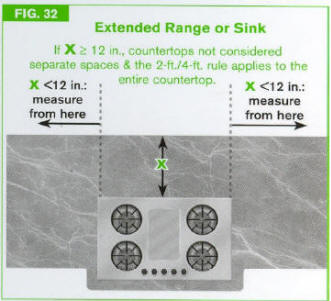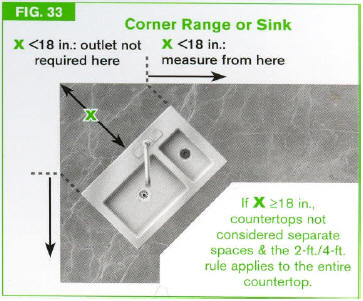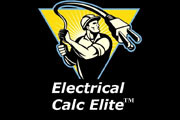Wiring Code
Electrical wiring code is something you must become familiar with do any home wiring project right. If you have it inspected, which is normally required, you'll want to be following these wiring codes as well. Here are a few commonly used codes that apply to residential wiring. You should check local codes for your areas to ensure proper compliance but these codes are pretty standard in most parts of the U.S. Wiring requirements are governed by the National Electric Code (NEC) and new versions of the code come out every few years. Be sure to check with your local building department to determine which version you are required to meet. There is a link at the bottom of this page for you to access the actual NEC code books for free.
When building a home theater, choosing the right audio/video equipment and home theater seating is a necessity, but analyzing your electrical power needs is also an important consideration.
Kitchen Wiring Codes
The following are common wiring codes for your kitchen.
-A minimum of two 20-amp small appliance branch circuits are required for portable appliances that are used in kitchens and dining areas. These circuits are in addition to those that supply lighting or permanently installed appliances. Portable kitchen appliances have short cords so they are not as likely to be run across sinks or cook tops. A receptacle is needed to serve every countertop 1 ft or more in width.
-Outlets above the kitchen counter (for countertop appliances) should be fed by both circuits, not wired to just one circuit. The circuits for these outlets should not supply any other lights or outlets in the house.
-Recommended that refrigerator be on individual branch circuit but it can be tied to small appliance branch circuits in kitchen.
-Dishwasher and disposal should be on separate branch circuits from the small appliance circuits.
Note: New in NEC 2014 - Dishwasher branch circuit (receptacle or hardwired) is required to be GFCI protected
-Countertop receptacles must all by GFCI protected
-Receptacles must be spaced so no point is more than 24 inches from a receptacle. See 2-ft./4ft. rule below.
-Receptacles can be a max of 20in above countertop

-Peninsula countertop spaces require receptacles if long dimension >24in and short dimension <12, measured from connecting edge.
-Island and peninsula countertop spaces require a min 1 receptacle per space - no 24in rule applies.
-Island and peninsula receptacles man be mounted no more than 12in below counter if max 6in overhang and no backsplash or means of installing receptacle above countertop exist.
-Face-up countertop receptacles are not allowed per code
-Area behind sink or range not consider countertop space if <12in for straight wall or <18in for corner appliance. See wiring code diagrams below.


Appliance Wiring Codes
-Separate circuits are required for built-in appliances (i.e.. range, over, dishwasher, disposal, central AC, furnace)
Note: New in NEC 2014 - Dishwasher branch circuit (receptacle or hardwired) is required to be GFCI protected
-One 20-amp circuit is needed for the laundry outlet within 6' of the machines. An electric dryer requires an additional 240-volt dedicated circuit.
Note: New in NEC 2014 - GFCI protection required for all 125-volt, single-phase, 15- and 20 amp receptacles in laundry rooms.
Outlet Wiring Codes
The following are common wiring codes for outlets in the rest of your house:
-One lighting/convenience outlet circuit should be provided for every 575 sq ft of floor space in a house.
-Any bathroom or garage outlet within 6ft of a sink must be Ground-Fault Circuit Interrupter (GFCI) protected. All kitchen outlets for countertop must be GFCI protected. Bedrooms outlets should be Arc-Fault Circuit Interrupter (AFCI) protected.
-At least one GFCI outlet is required in an unfinished basement, as well as most outdoor outlets. Exceptions include inaccessible outlets like those in a garage ceiling or behind a refrigerator.
-Walls 2ft or more in width require a receptacle
-Partitions and bar-type counters counts as walls
-Doorways and fireplaces are not counted as walls
-Receptacles required within 6ft horizontally of any point along a wall.
-Receptacles required for hallways greater than 10ft in length
-Receptacles must be mounted less than 5 1/2ft high
-Floor receptacles >18in from wall do not count towards required receptacles

GFCI Wiring Code Requirements
The follow wiring codes apply to all 15A and 20A receptacles on 120V circuits. They do not apply to 240V receptacles or 30A 120V receptacles
-All bathroom receptacles require GFCI per code
-All garage and accessory building receptacles (exceptions for receptacles in garage and basements that are not readily accessible or that serve appliances like a freezer)
-All receptacles in unfinished basements
-All outdoor receptacles (exceptions for deicing equipment on dedicated branch if located so not readily accessible)
-All receptacles in crawl spaces at or below grade level
-All receptacles serving kitchen counters
-Receptacles within 6 ft of outside edge of laundry, utility, or wet bar sinks
Note: NEC 2014 - Additional areas requiring GFCI protection:
-Laundry room receptacles
-Dish washer (receptacles or hardwired - GFCI must be readily accessible)
Bathroom Wiring Codes
-Receptacle required on wall within 3ft of each basin or many be in cabinet side or face <12in below countertop
-No face-up outlets on vanity countertop
-No receptacles with or directly over tub or shower
-Separate 20A circuit for bath receptacles or dedicated 20A circuit to each bathroom
Laundry Wiring Codes
These are common wiring codes for your laundry room:
-Minimum of one 20A circuit to laundry receptacles
-No other outlets on laundry receptacle circuit
-Electric Dryer min 30A dedicated circuit (10AWG copper)
Outdoor Wiring Codes
These are common wiring codes required for outlets that are placed outdoors or on the outside of your house.
-Receptacles accessible from grade required at front and rear of dwelling, max 6 1/2ft above grade
-Receptacle required for balconies with interior access and >20 sq ft
-Receptacles in damp or wet locations required to be listed weather-resistant type
-Outdoor damp location receptacle (e.g. covered deck) require weatherproof cover
-Wet location 15A or 20A receptacles require in-use covers

Light Switch Wiring Codes
The following are common wiring codes for residential light switches:
-Wall-switch controlled lighting outlets required in all habitable rooms and bathrooms
-Habitable room lighting outlets may be switched receptacle except in kitchen and bathroom
-Wall-switch controlled lighting outlets required in hallways, stairways, attached garages, and detached garages with power
-Interior stairs require switch at each entrance if 6 or more stairs exist
-Lighting outlet required on exterior side grade-level doors
-Lighting outlet required at garage egress doors
-Lighting outlet not required at garage vehicle doors
Download a FREE copy of NEC
You can view free copies of NEC 2002, NEC 2005, NEC 2008, NEC 2011, and NEC 2014 at NFPA's website. Click here.
Before you can view the documents you must register with NFPA. It requires an email address and about 5 minutes to register but it beats paying $85.00 for the book itself if you need to look something up real quick. It's setup to be read-only but you can always use Shift+PrintScreen buttons to copy and paste into Word and then print out a page or two if you need it.
Residential Electrical Guidelines and Codes
Rough-In Electrical and Pulling Cable
Common Electrical Wiring Diagrams
Wire Gauge and Voltage Drop Calculator
NEC Reference Tables (2011, 2008, 2005, 2002, and 1999)
Sizing Your Electrical Service
Electrical - Main Service Line Installation
Click the icons below to get our NEC® compliant Electrical Calc Elite or Electric Toolkit for Android and iOS. The Electrical Calc Elite is designed to solve many of your common code-based electrical calculations like wire sizes, voltage drop, conduit sizing, etc. The Electric Toolkit provides some basic electrical calculations, wiring diagrams (similar to those found on this website), and other electrical reference data.


